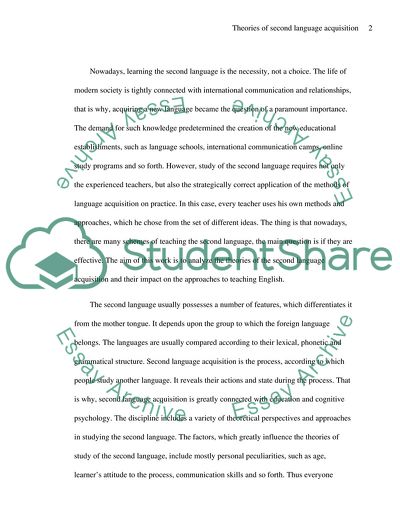Cite this document
(The Development of Theories of Second Language Acquisition Article Example | Topics and Well Written Essays - 2000 words, n.d.)
The Development of Theories of Second Language Acquisition Article Example | Topics and Well Written Essays - 2000 words. https://studentshare.org/humanitarian/1855327-the-development-of-theories-of-second-language-acquisition-and-discuss-how-these-have-impacted-on-approaches-to-teaching-english
The Development of Theories of Second Language Acquisition Article Example | Topics and Well Written Essays - 2000 words. https://studentshare.org/humanitarian/1855327-the-development-of-theories-of-second-language-acquisition-and-discuss-how-these-have-impacted-on-approaches-to-teaching-english
(The Development of Theories of Second Language Acquisition Article Example | Topics and Well Written Essays - 2000 Words)
The Development of Theories of Second Language Acquisition Article Example | Topics and Well Written Essays - 2000 Words. https://studentshare.org/humanitarian/1855327-the-development-of-theories-of-second-language-acquisition-and-discuss-how-these-have-impacted-on-approaches-to-teaching-english.
The Development of Theories of Second Language Acquisition Article Example | Topics and Well Written Essays - 2000 Words. https://studentshare.org/humanitarian/1855327-the-development-of-theories-of-second-language-acquisition-and-discuss-how-these-have-impacted-on-approaches-to-teaching-english.
“The Development of Theories of Second Language Acquisition Article Example | Topics and Well Written Essays - 2000 Words”. https://studentshare.org/humanitarian/1855327-the-development-of-theories-of-second-language-acquisition-and-discuss-how-these-have-impacted-on-approaches-to-teaching-english.


